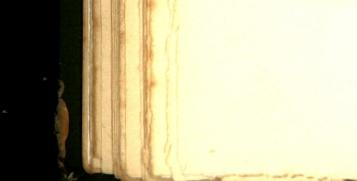33
CHAPTER IV
THE ST. BERNARD
THE history of the St. Bernard dog would not be complete without reference being made to the noble work that he has done in Switzerland, his native land : how the Hospice St. Bernard kept a considerable number of dogs which were trained to go over the mountains with small barrels round their necks, containing restoratives, in the event of their coming across any poor travellers who had either lost their way, or had been overcome by the cold. We have been told that the intelligent animals saved many lives in this way, the subjects of their deliverance often being found entirely buried in the snow.
Handsome as the St. Bernard is, with his attractive colour and markings, he is a cross-bred dog. From the records of old writers it is to be gathered that to refill the kennels at the Hospice which had been rendered vacant from the combined catastrophes of distemper and the fall of an avalanche which had swept away nearly all their hounds, the monks were compelled to have recourse to a cross with the Newfoundland and the Pyrenean sheepdog, the latter not unlike the St. Bernard in size and appearance. Then, again, there is no doubt whatever that at some time the Bloodhound has been introduced, and it is known for a certainty that almost all the most celebrated St. Bernards in England at the present time are closely allied to the Mastiff.
The result of all this intermixture of different breeds has been the production of an exceedingly fine race of dogs, which form one of the most attractive features at our dog shows,
32
and are individually excellent guards and companions. As a companion, the St. Bernard cannot be surpassed, when a large dog is required for the purpose. Most docile in temperament and disposition, he is admirably suited as the associate of a lady or a child.
The St. Bernard is sensitive to a degree, and seldom forgets an insult, which he resents with dignity. Specimens of the breed have occasionally been seen that are savage, but when this is the case ill-treatment of some sort has assuredly been the provoking cause.
The dogs at the Hospice of St. Bernard are small in comparison with those that are seen in England belonging to the same race. The Holy Fathers were more particular about their markings than great size. The body colour should be brindle or orange tawny, with white markings ; the muzzle white, with a line running up between the eyes, and over the skull, joining at the back the white collar that encircles the neck down to the front of the shoulders. The colour round the eyes and on the ears should be of a darker shade in the red ; in the centre of the white line at the occiput there should be a spot of colour. These markings are said to represent the stole, chasuble and scapular which form part of the vestments worn by the monks ; but it is seldom that the markings are so clearly defined ; they are more often white, with brindle or orange patches on the body, with evenly-marked heads.
In England St. Bernards are either distinctly rough in coat or smooth, but the generality of the Hospice dogs are broken in coat, having a texture between the two extremes. The properties, however, of the rough and smooth are the same, so that the two varieties are often bred together, and, as a rule, both textures of coat will be the result of the alliance. The late M. Schumacher, a great authority on the breed in Switzerland, averred that dogs with very rough coats were found to be of no use for work on the Alps, as their thick covering became so loaded with snow and their feet so clogged
D

